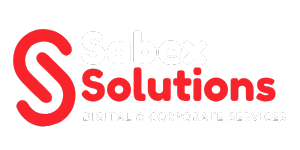
How to Secure Your Website from Cyber Threats
Fortress of Solitude: A Comprehensive Guide to Securing Your Website from Cyber Threats:
In today’s digital landscape, your website is more than just a collection of web pages; it’s your storefront, your brand ambassador, and often, the lifeblood of your business. But just as you would lock the doors of a physical store, you must actively secure your online presence. Cyber threats are not a matter of if, but when. The consequences of a breach—data theft, reputational damage, financial loss, and search engine blacklisting—can be devastating.
The good news? You don’t need to be a cybersecurity expert to build a robust defense. By implementing a layered security strategy, you can transform your website from a vulnerable target into a formidable fortress.
1. The Foundation: Software Hygiene
Outdated software is the single biggest vulnerability for most websites.
- Update Everything, immediately:This includes your Content Management System (like WordPress, Joomla, or Drupal), all plugins, themes, and any third-party scripts. Developers release updates primarily to patch security vulnerabilities. Enable automatic updates where possible, and make manual updates a weekly ritual.
- The Principle of Least Privilege:Not every user needs administrator access. Create user accounts with the minimum level of permission required to perform their tasks. An editor doesn’t need to install plugins, and a contributor doesn’t need to publish live posts.
- Uninstall the Unnecessary:Deactivate and delete unused plugins, themes, and user accounts. Each one is a potential doorway for an attacker. A clean website is a more secure website.
2. The Unbreakable Lock: Fortify Access Points
Your login page is the front door. Don’t leave the key under the mat.
- Strong Password Enforcement:Mandate the use of long, complex passwords (a mix of uppercase, lowercase, numbers, and symbols) for all users. Consider using a password manager to generate and store them.
- Two-Factor Authentication (2FA):This is non-negotiable for modern security. 2FA adds a second layer of verification, such as a code sent to your phone. Even if a password is stolen, the attacker cannot gain access without the second factor.
- Limit Login Attempts:Protect your site against “brute force” attacks, where bots try thousands of password combinations. By limiting login attempts (e.g., 3-5 tries), you can lock out an IP address after repeated failures.
3. The Encrypted Tunnel: SSL/TLS Certificates
You would never shout your credit card number across a crowded room; don’t let your website data travel unprotected.
- HTTPS Everywhere:An SSL/TLS certificate encrypts the data flowing between your visitor’s browser and your web server. This protects sensitive information like login credentials and payment details. Today, it’s also a ranking signal for Google and a trust indicator for visitors (the padlock icon in the address bar). Most web hosts offer free SSL certificates (like Let’s Encrypt).
4. The Digital Moat: Web Application Firewall (WAF)
A WAF is a powerful filter that sits between your website and the internet traffic it receives.
- Filtering Malicious Traffic:A WAF acts as a intelligent gatekeeper, blocking common threats like SQL Injection, Cross-Site Scripting (XSS), and bad bots before they even reach your site. Many security plugins offer a WAF, and premium services like Cloudflare, Sucuri, or Imperva provide even more robust, cloud-based protection.
5. The Automated Guard: Regular Backups
Security is about prevention, but also about recovery. If the worst happens, your backup is your salvation.
- The 3-2-1 Backup Rule:Maintain at least 3 copies of your data, on 2 different media types, with 1 copy stored off-site (e.g., cloud storage like Amazon S3 or Google Drive).
- Automate and Verify:Don’t rely on manual backups. Schedule automated daily or weekly backups. Crucially, periodically test your backups by performing a restore to ensure they work correctly. A corrupt backup is as good as no backup at all.
6. Vigilance and Monitoring
A secure website requires ongoing attention.
- Security Scanning:Use security plugins or services to regularly scan your website for malware, vulnerabilities, and suspicious file changes. These tools can often alert you the moment a problem is detected.
- Website File Integrity Monitoring:Advanced security tools can monitor your core files for unauthorized changes. If a hacker alters a file, you’ll be notified instantly.
- Secure Your Local Environment:Remember, your own computer is a potential entry point. Ensure your local machine is free from malware and that you only connect to your website’s admin area from secure, trusted networks.
Conclusion: Security is a Journey, Not a Destination
Securing your website is not a one-time task you can check off a list. It is an ongoing process that requires vigilance and adaptation. The cyber threat landscape is constantly evolving, and so must your defenses.
By building upon this layered approach—starting with strong fundamentals, fortifying access, encrypting data, deploying a firewall, and maintaining reliable backups—you are not just protecting code and data. You are protecting your reputation, your customers’ trust, and the future of your online business. Start today, because in the world of cybersecurity, the best time to build your fortress was yesterday. The second-best time is now.
